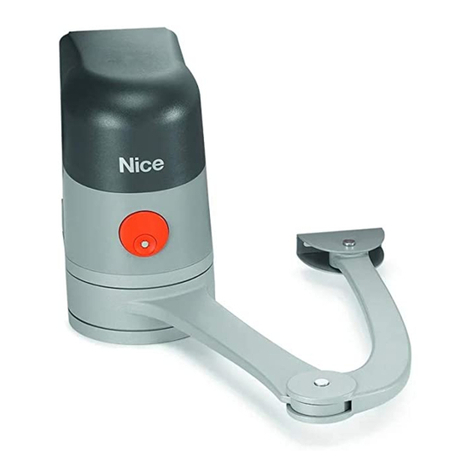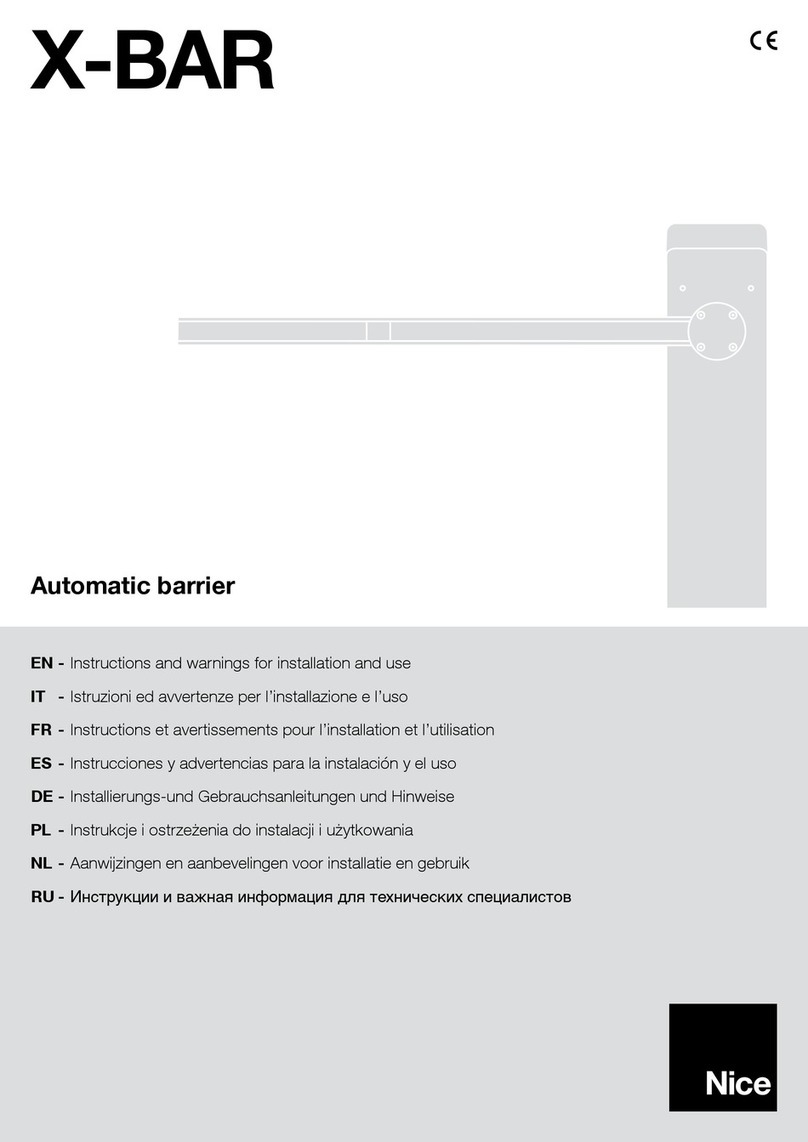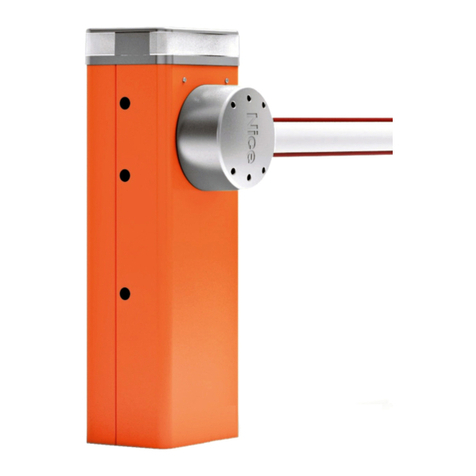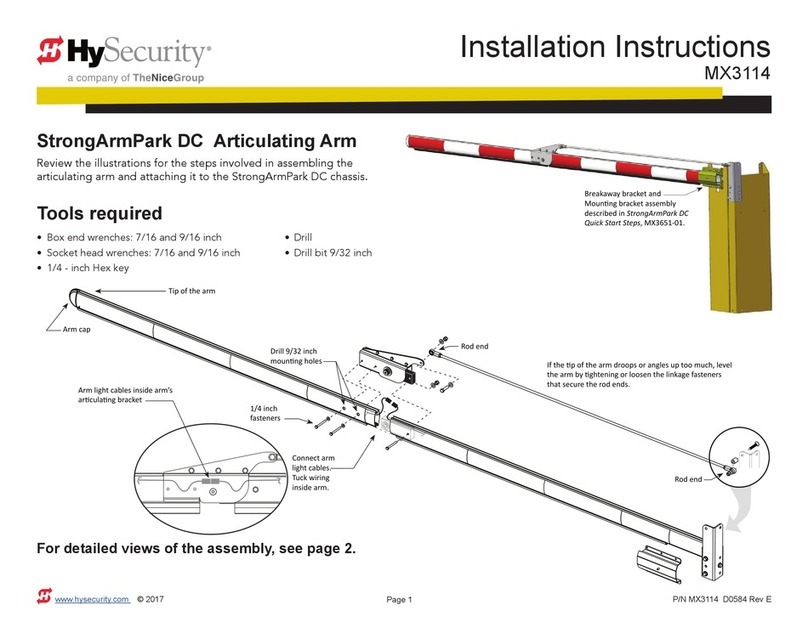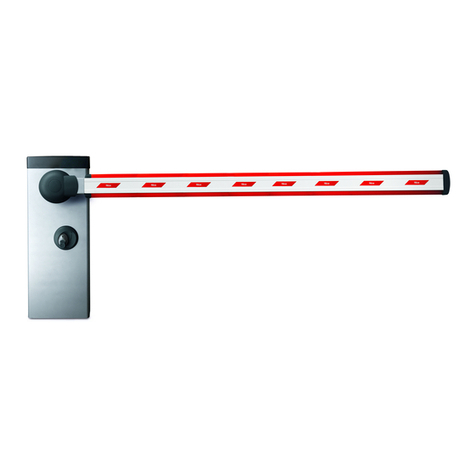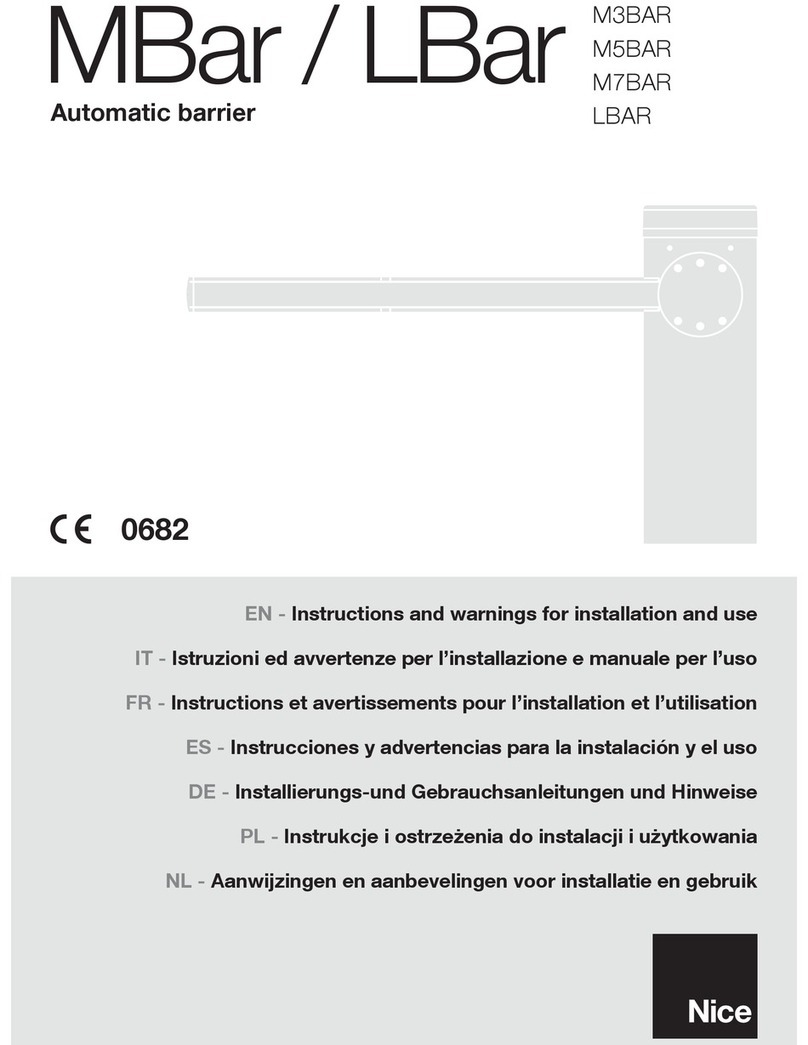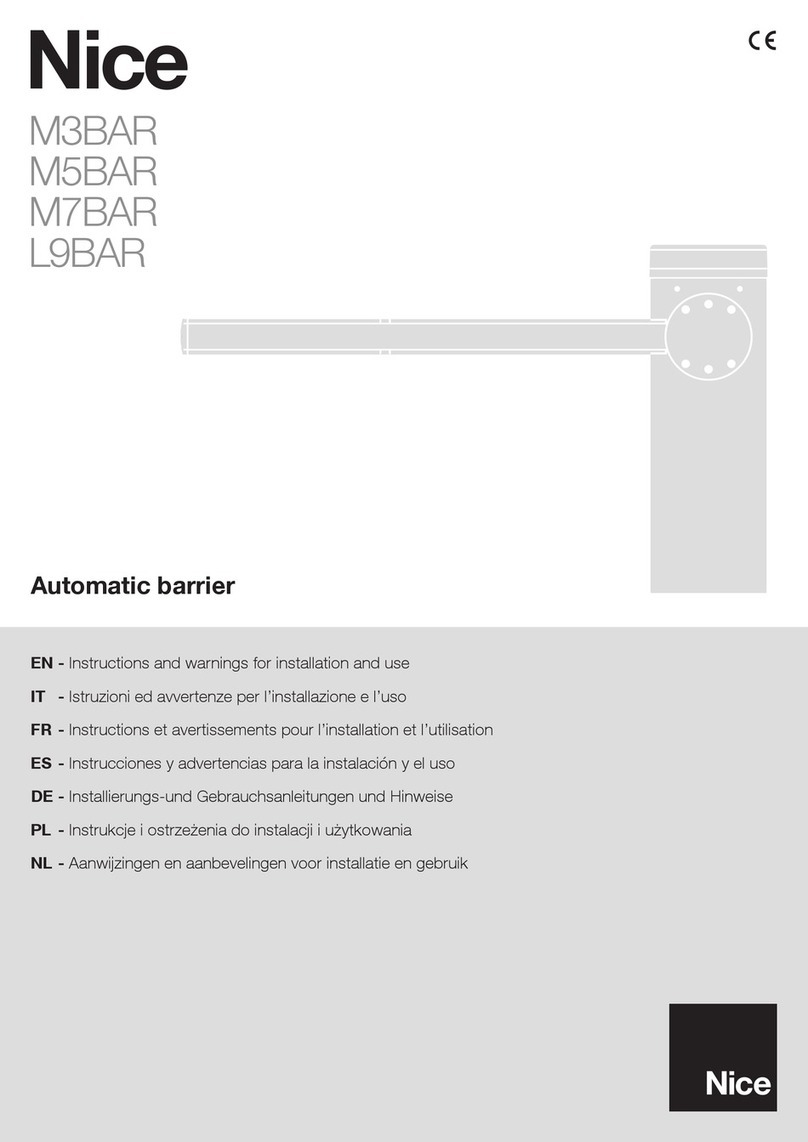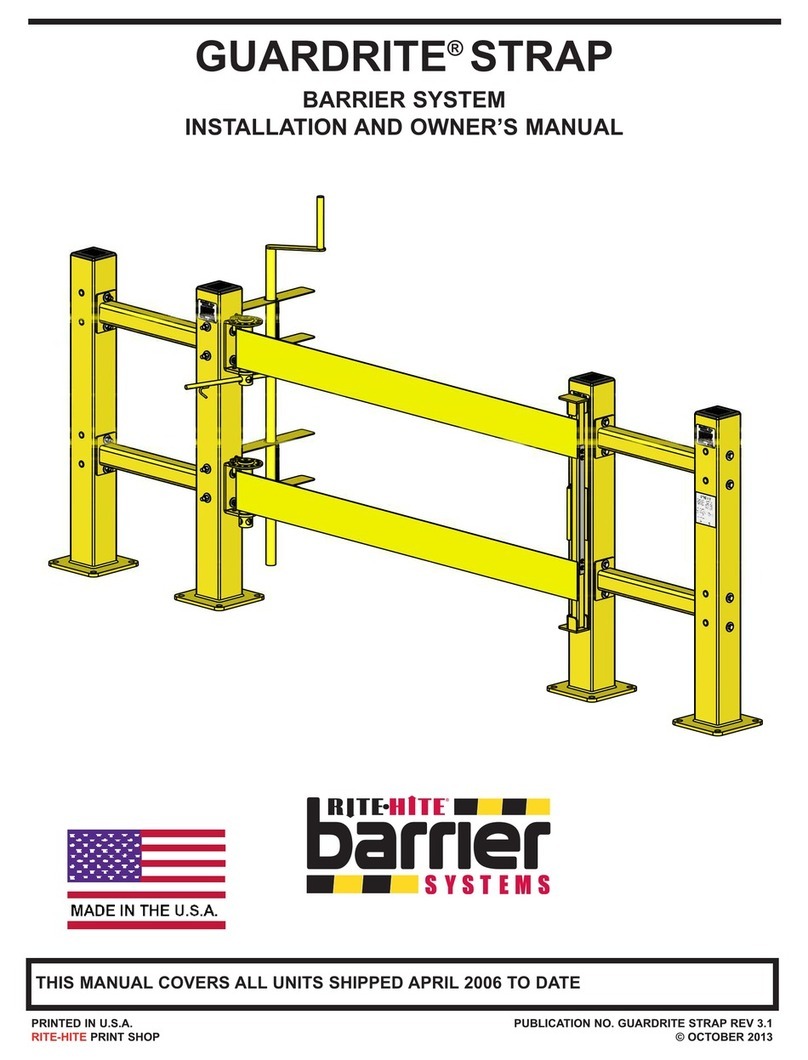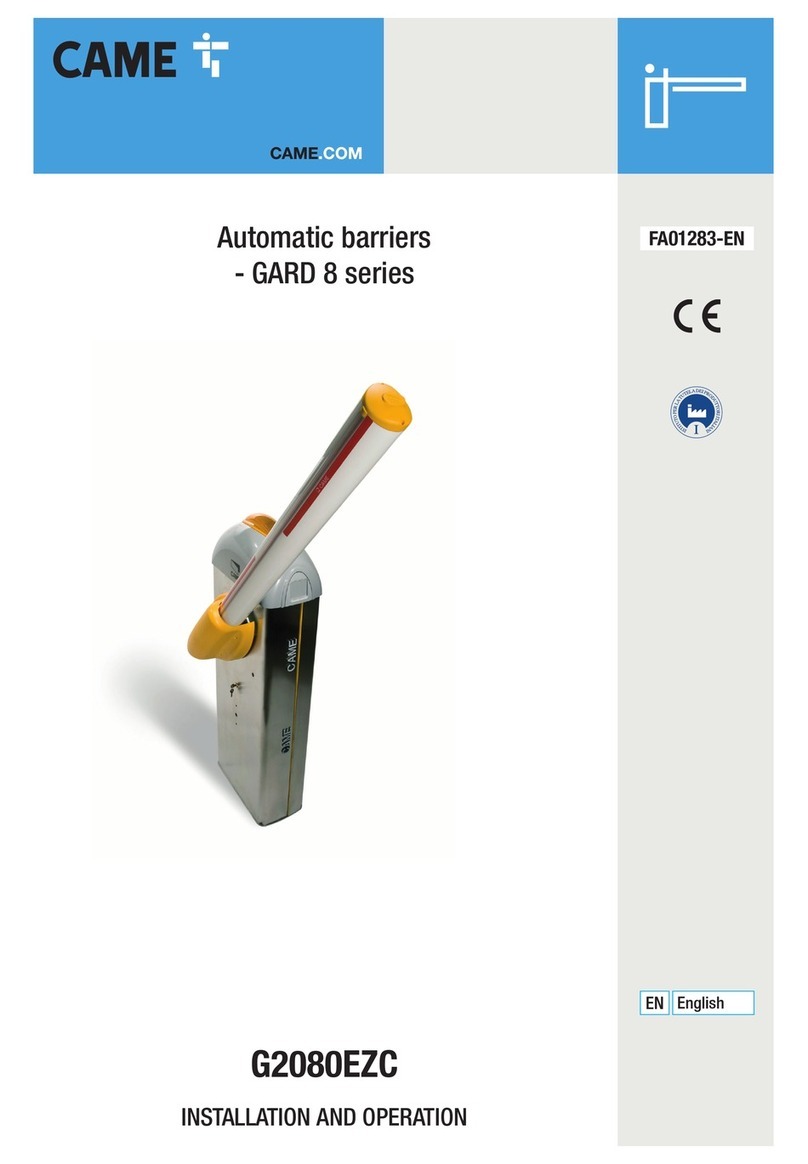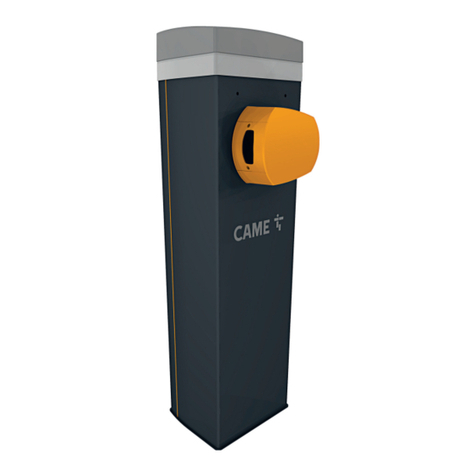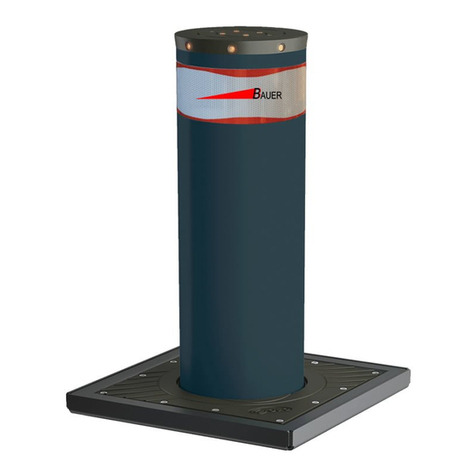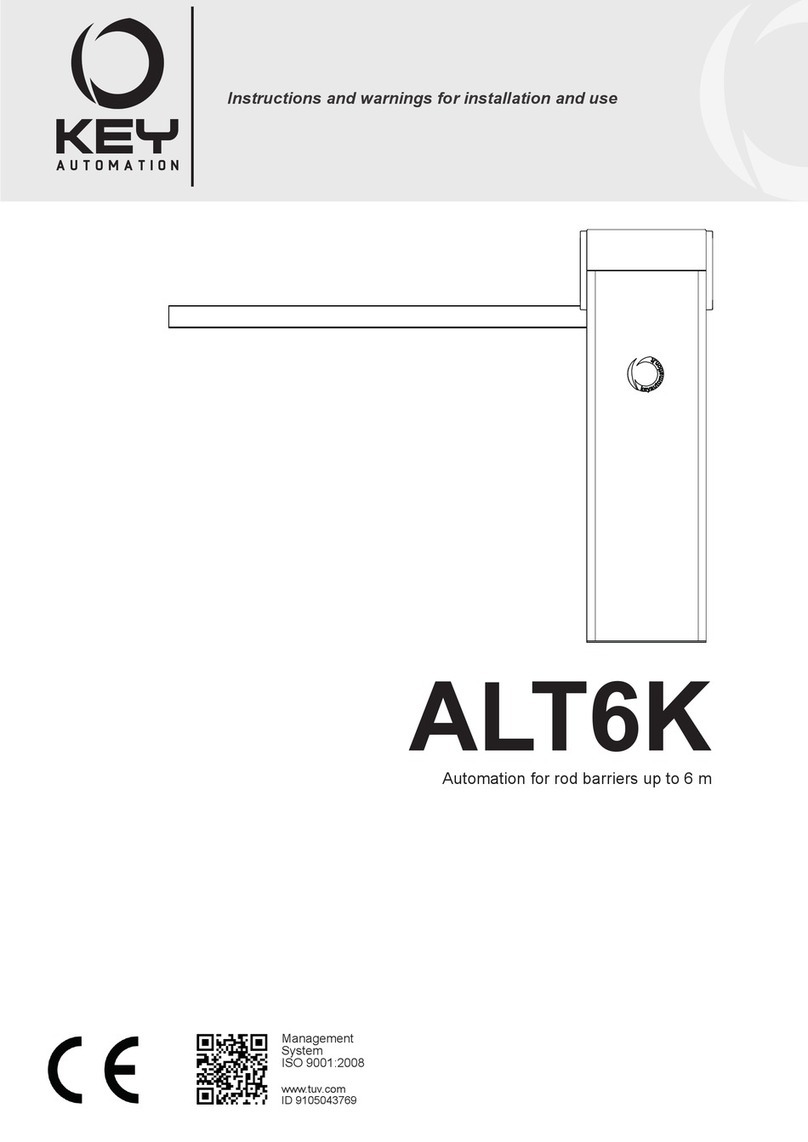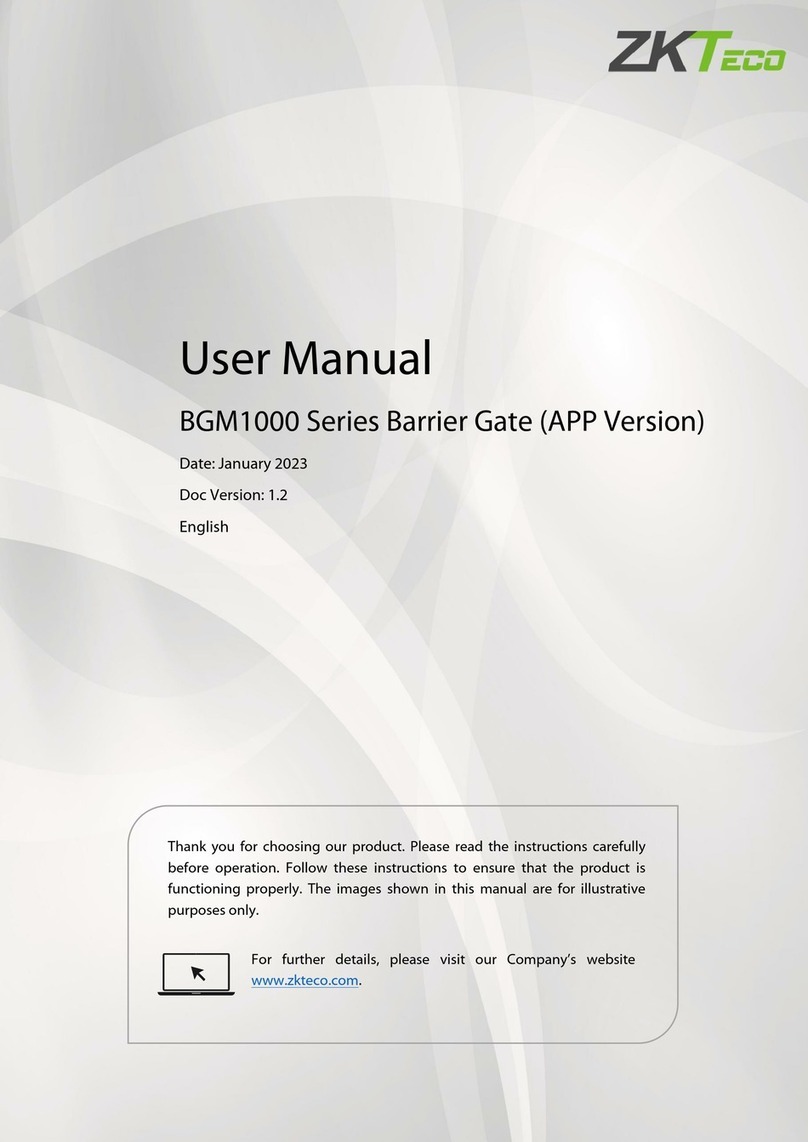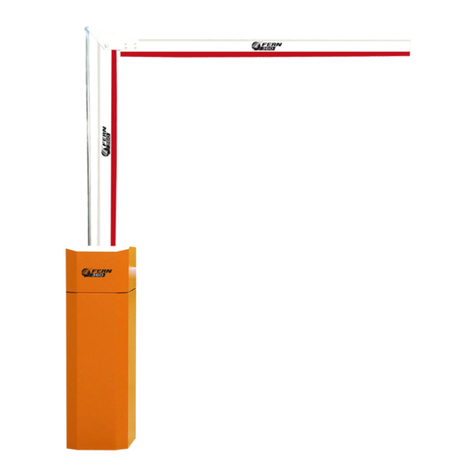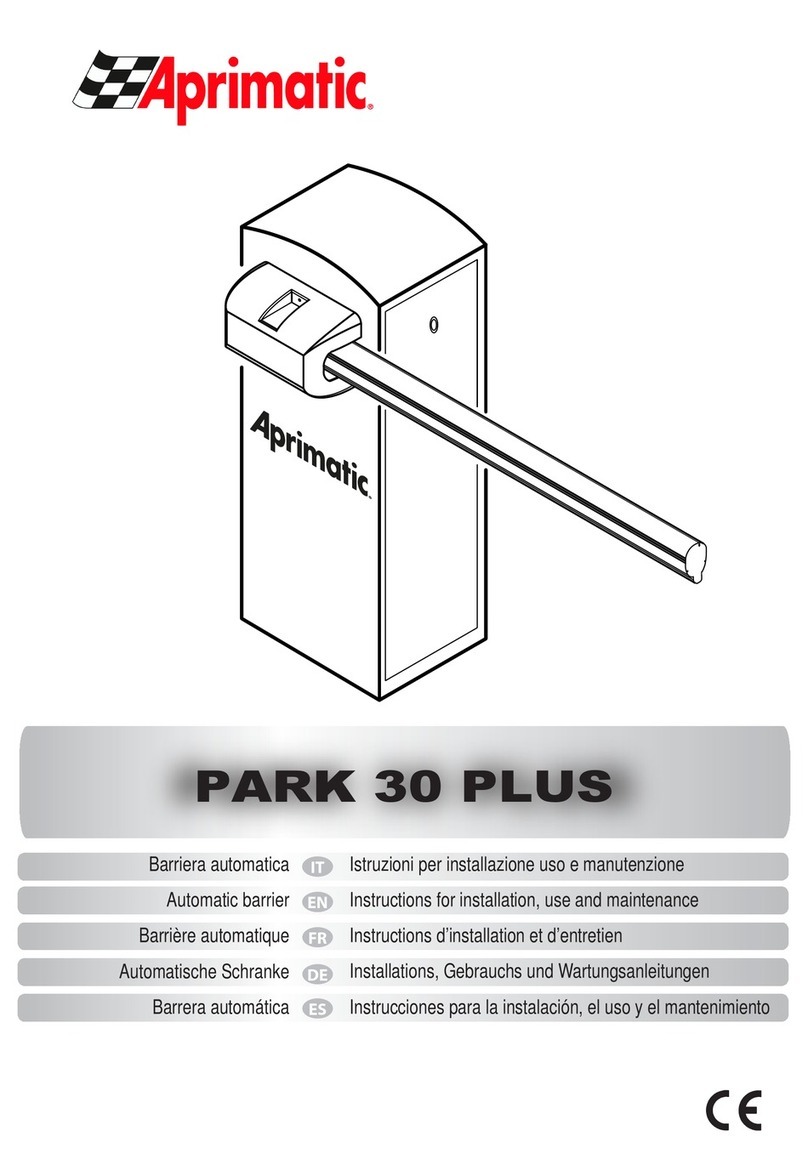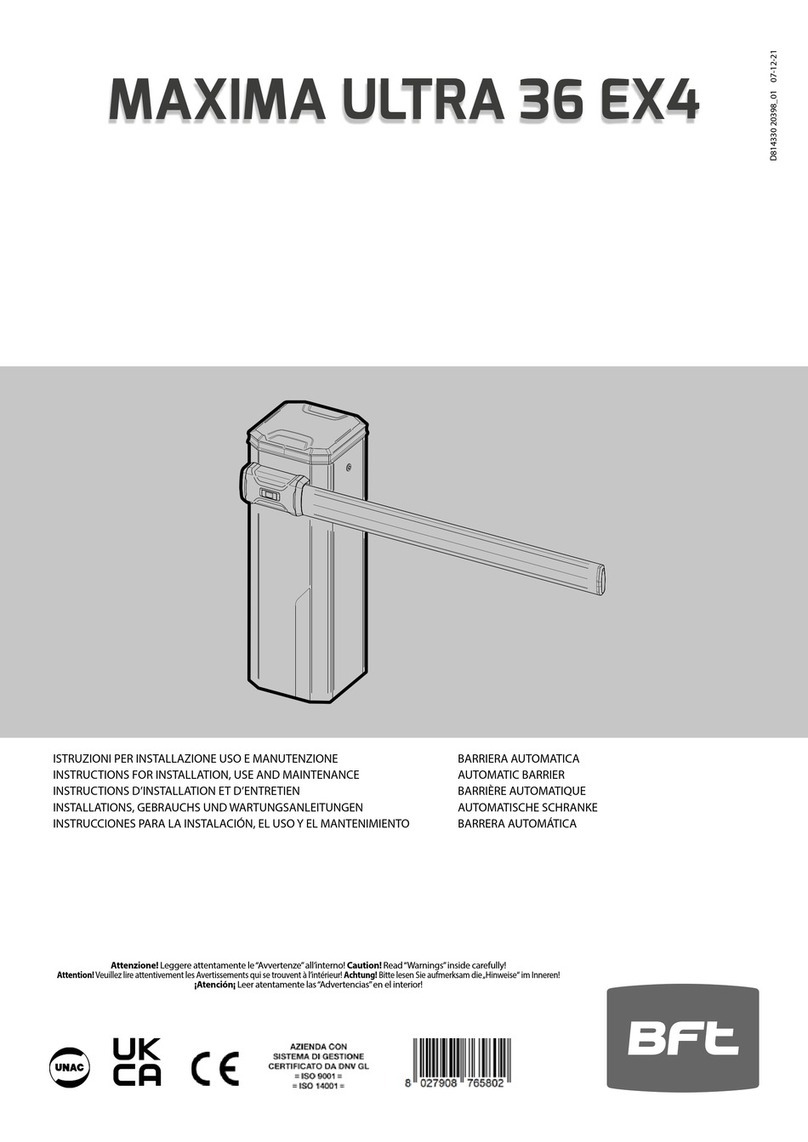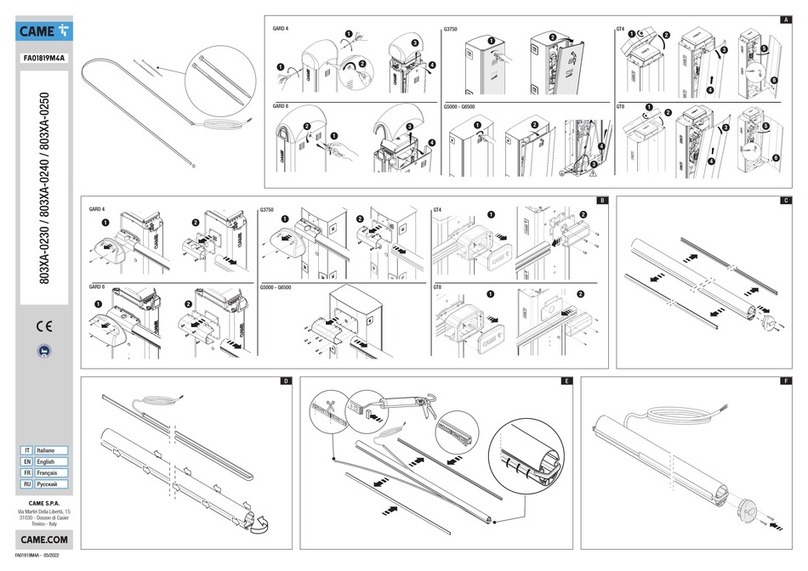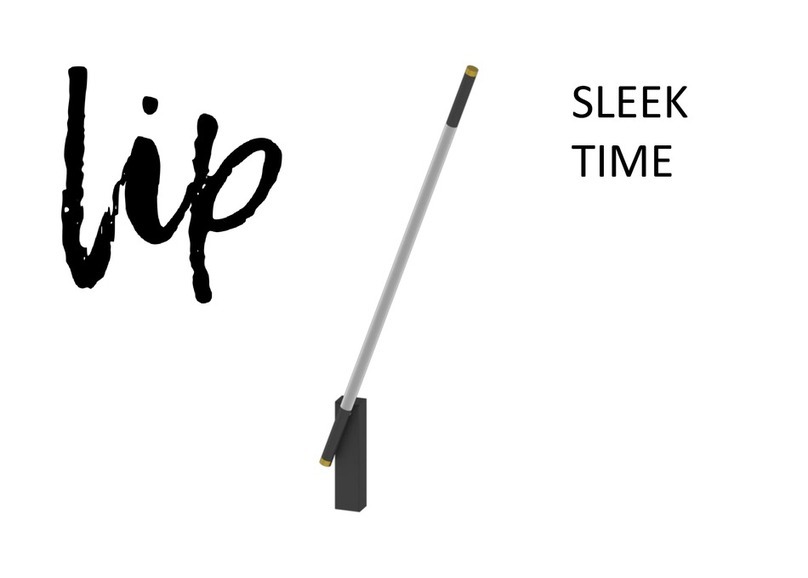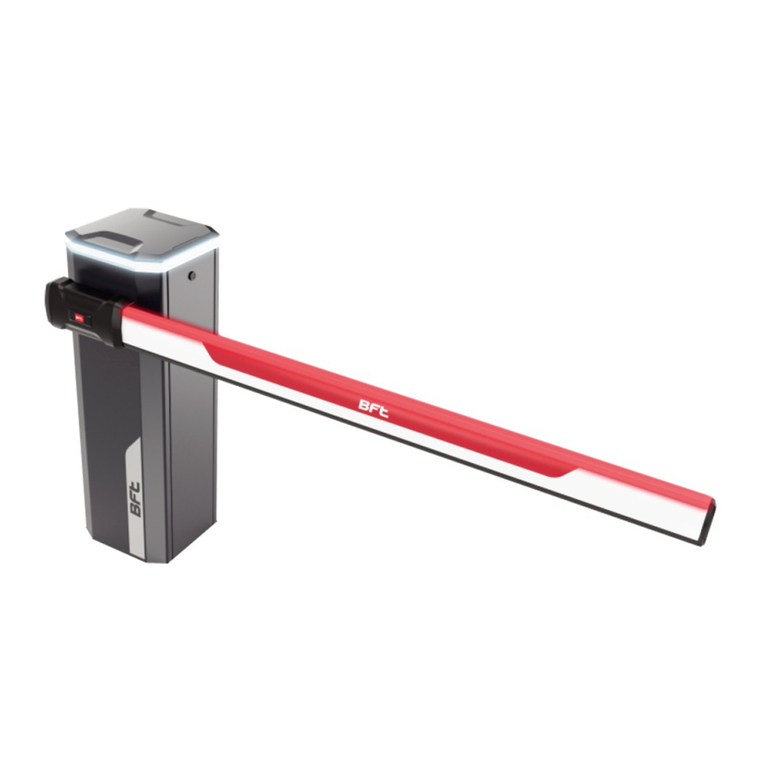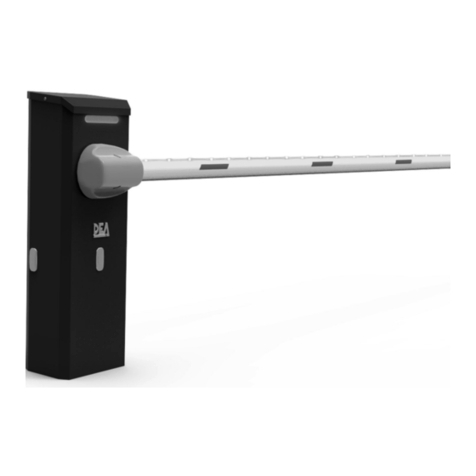
3
Be Safe!
WARNING!! These are the general safety obligaons for the installers and users of ET Nice (Pty)
Ltd automaon equipment. A copy of this document also appears in the user instrucons. Those
instrucons must be issued to the responsible end user during the handover and instrucon
meeng.
1. Only suitably qualied persons, may install, repair or service the product. Unless expressly indicated in the user instrucons, no
user serviceable components can be found inside any ET Nice (Pty) Ltd automaon product.
2. It is important for personal safety to study and follow all the instrucons carefully. Incorrect installaon or misuse may cause
serious personal harm.
3. Keep the instrucons in a safe place for future reference.
4. This product was designed and manufactured, strictly for the use indicated in the accompanying documentaon. Any other use
not expressly indicated in the documentaon, may damage the product and/or be a source of danger. ET Nice (Pty) Ltd cannot
accept responsibility for improper use or incorrect installaon of this product.
5. ET Nice (Pty) Ltd cannot accept responsibility if the principles of good workmanship are disregarded by the installer.
6. ET Nice (Pty) Ltd cannot accept responsibility regarding safety and correct operaon of the automaon, if other manufacturers’
equipment is added to this product.
7. Do not make any modicaons or alteraons to this product. Do not substute any component of this product with any other
component not expressly designed into this product.
8. Anything other than expressly provided for in the accompanying instrucons is not permied.
Prior to installaon:
1. All unnecessary ropes, chains and fasteners must be removed and all unnecessary latches or locks must be disabled from locking.
2. The barrier or door must be balanced correctly where it, neither opens nor closes from any posion under its own load. When
operated by hand the barrier or door should be free of hindrance and easily moved (In the case of a garage door if the balancing
springs need to be adjusted the adjustment should only be carried out by a qualied and experienced person).
3. The construcon of the barrier or door must be sound and automatable. It is the responsibility of the installer to ensure that the
mechanical components of the barrier or door system are sucient to withstand the necessary forces in cases of overload.
4. It is the responsibility of the installer to ensure the barrier or door is suciently trapped within its range of travel by means of
mechanical ends of travel stoppers.
5. Ensure all xed mounng points, such as the wall above the door in a garage door system or the posts in a swing barrier system,
are sound and strong enough to allow proper xing of the operator.
6. It is the responsibility of the installer to ensure the installed posion selected for this product, falls within the limitaons of the
products ingress protecon rang.
7. Ensure the area of installaon is not subject to explosive hazards. There should be no volale gasses or fumes as these can present
a serious safety hazard.
8. All ET Nice (Pty) Ltd garage door operators are supplied with a sealed 15A safety plug on lead for use in an electrical code of pracce
approved plug point. Do not extend, modify or replace the plug lead unless duly qualied as an electrician. Before installing the
unit, ensure the mains supply is switched o.
9. ET Nice (Pty) Ltd barrier operators are supplied with a terminal connecon for the electrical supply beneath the screwed down
cover of the operator. In the case of a model requiring 220Vac supply at the operator, an all pole negavely biased switch, with a
contact opening of greater than 3mm must be installed within 1.5m of the operator. This switch must be clear of all workings of
the system and must be in a posion secure from public access. This switch and its connecons must be inspected and passed by
a cered electrician prior to using it.
10. It is the responsibility of the installer to ascertain that the designated persons (including children) intended to use the system,
do not suer reduced physical sensory or mental capabilies, or lack of experience and knowledge, unless they have been given
supervision or instrucon concerning the use of the system by a person responsible for their safety.
11. The drive may not be installed on a door incorporang a wicket door, unless the drive is disabled by the release of the wicket door.
(Wicket door :- A pedestrian door within the main barrier or door)
1. Ensure the working area is clear of obstrucons and obstacles.
2. Install the safety warning scker within clear view of where the barrier or door will be operated from. Typically this would be
adjacent to any xed trigger switches or on the barrier or door itself.
3. The emergency manual release must be installed where it is no higher than 1.8m from the oor level. This would apply to the cord
in a garage installaon or the lockable lever in a barrier installaon.
4. Any addional xed door control switches such as wall consoles or keypads, if installed, must be at a height of at least 1.5m, within
clear sight of the barrier or door and away from any moving components of the system.
During installaon:
Connued overleaf.......
